2003 HONDA CR125 TRANSFORMED INTO A BIG BORE CR139
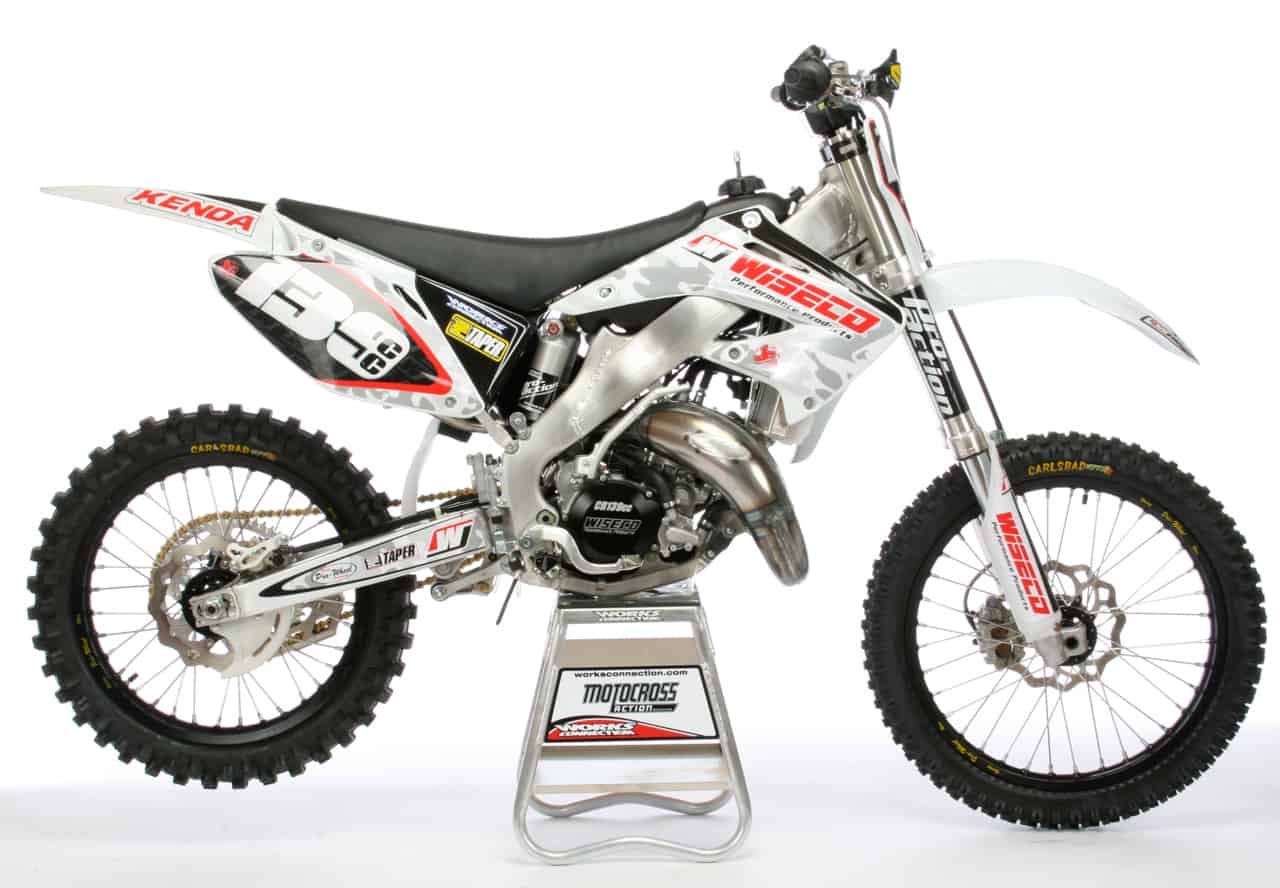 The bike test is a flashback to the March 2008 issue of MXA.
The bike test is a flashback to the March 2008 issue of MXA.
You don’t have to be the Amazing Kreskin to predict that with each passing year there will be fewer and fewer 125 two-stokes on the motocross tracks of America. In 2006, Kawasaki stopped importing the KX125 and, for 2008, the RM125 and CR125 bit the dust. That leaves only the Yamaha YZ125 and KTM 125SX on the showroom floors this season. And, we wouldn’t be telling tales out of school if we said that at least one of those two machines is iffy for 2009.
It’s a crying shame that future riders will never get to smell a plume of premix wafting out of the back of a 125 stinger. Or ride a shrieking 125 on the edge of reason for the sheer joy to seeing how long you can leave it on. And, it’s unlikely that a modern four-stroke will ever feel as flickable as a two-stroke tiddler whipped across a major gap. The charms of a two-stroke are undeniable, but the next generation will never know them.
In 2006, Kawasaki stopped importing the KX125 and, for 2008, the RM125 and CR125 bit the dust.
That is sad, but for riders who still want to keep the two-smoke alive, there is still hope in the big-bore 125– which is why Wiseco’s CR139 project bike caught our attention.
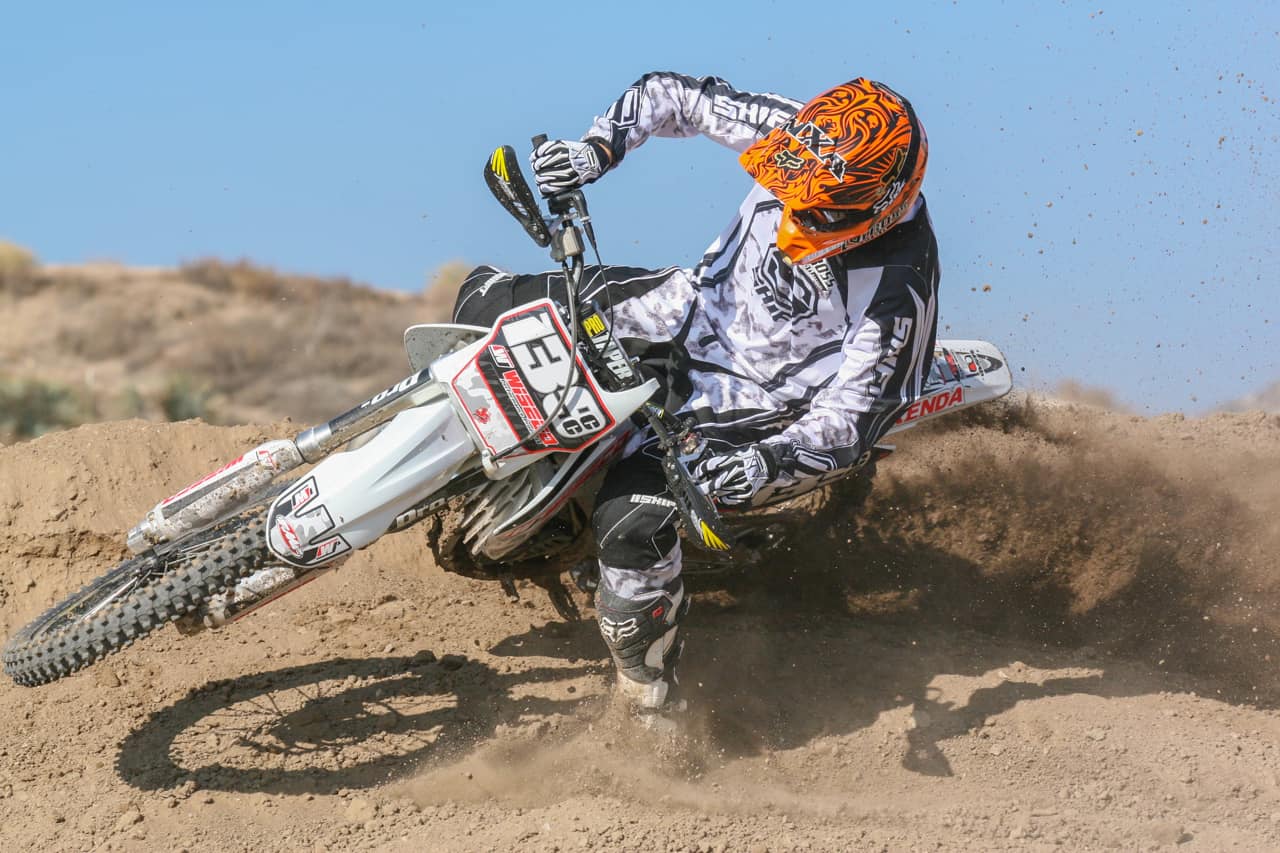 The CR139 was a blast to ride.
The CR139 was a blast to ride.
Aside from the fun factor, Wiseco’s CR139 holds the potential of being a very practical bike for an entry-level racer or loyal CR125 owner who is trying to get a few more years out of his trusty tiddler. If you own a couple-year-old 125cc two-stroke, you are facing a quandary. What can you do with it? How can you keep it competitive? What is the simplest way to make it faster? How can you make a two-stroke compete against the much larger 250cc four-strokes. The answer comes in the form of a bigger piston.
Wiseco wanted to prove that the thousands of people who have Honda CR125’s (or KX125’s, RM125’s or YZ125’s) don’t have to relegate them to the junk heap. Their starting point was a 2003 Honda CR125? Why not a brand-new CR125? That’s simple. There is no such thing as a brand-new CR125. Every CR125 in the United States is used. We think that their choice is a stroke of genius. After all, the 2003 Honda CR125 earned last place in MXA’s 2003 125 shootout. Oh, don’t get us wrong, it was a very good bike (blessed with a very bad engine). The 2003 CR125 had the best handling, best suspension and was the lightest 125 in 2003, but the engine was anemic. The short, punchy and abrupt powerband killed the competitive chances of the 2003, 2004, 2005, 2006 and 2007 CR125s.
How can you make a two-stroke compete against the much larger 250cc four-strokes. The answer comes in the form of a bigger piston.
After every 125 shootout, the MXA wrecking crew would say, “If only this bike had a better engine it would win, hands down.” Apparently Wiseco thought the same thing, because instead of choosing a super-competitive 125 to showcase their big-bore engine kit, they decided to challenge themselves by choosing a bike with a much less stellar powerband.
SHOP TALK: WHAT’S IT ALL ABOUT?
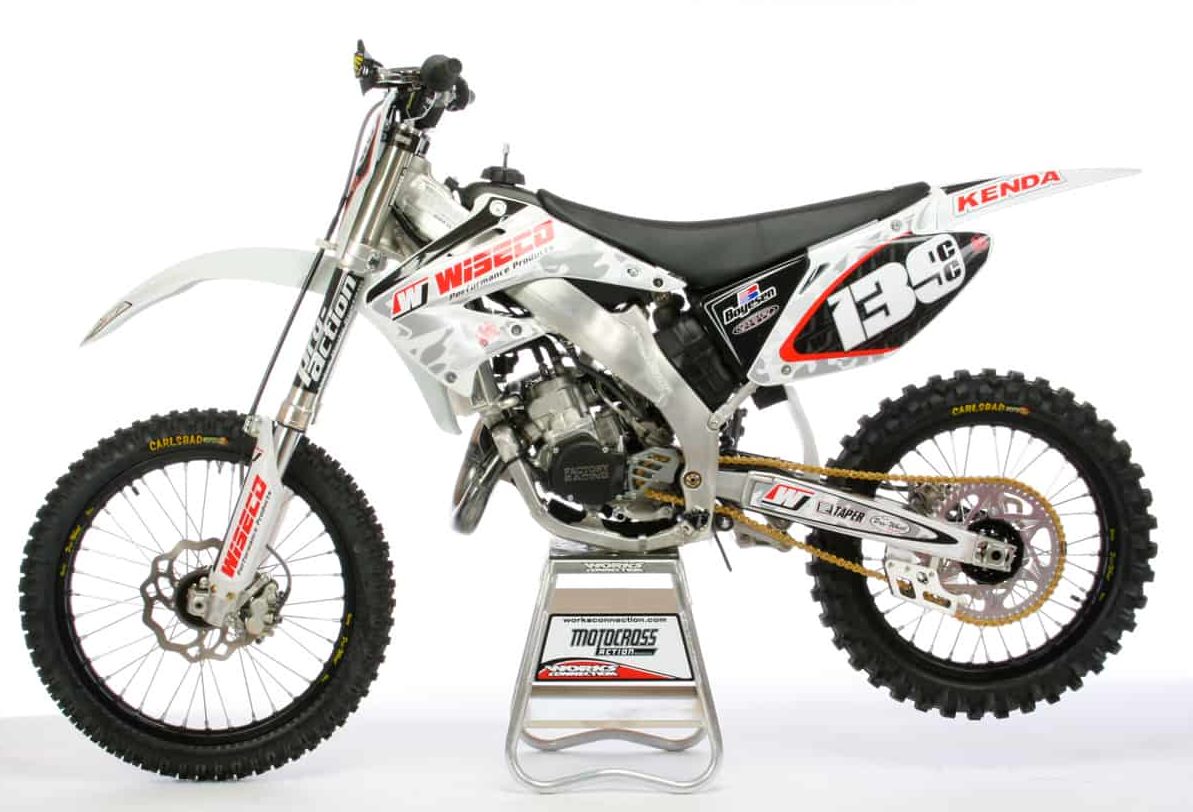 Wiseco’s big-bore CR139 is a blast to ride, especially compared to the stock CR125 engine. The extra displacement adds several horsepower, but best of all broadens out the previously snappy CR125 power delivery.
Wiseco’s big-bore CR139 is a blast to ride, especially compared to the stock CR125 engine. The extra displacement adds several horsepower, but best of all broadens out the previously snappy CR125 power delivery.
First and foremost, Wiseco’s CR139 is a little over the top. Wiseco decked it out with way too many aftermarket goodies. How so? The MXA wrecking crew loved the suspension, handling and ergos of the 2003 Honda CR125; we weren’t interested in improving anything but the engine. While we were impressed by the white camouflage graphics from JohnnySigns, black Pro-Wheel wheels and other accouterments–to us this bike was here to prove a point (and that point revolved around the engine and nothing else).
Engine: Due to the 125cc displacement disadvantage (and shortcomings of the stock CR125 engine), power delivery is the most critical part of the bike. In our experience, the stock CR125 engine does not respond well to traditional hop-up measures (porting, compression, reeds or carb mods). In 125cc trim, it defies conventional hop-ups. The only solution, and the best solution, is to go big on the di‘splacement. There is no substitute for cubic centimeters when you are searching for horsepower. Wiseco knows this better than anyone–since they are in the business of building piston kits for virtually every bike made (and some that haven’t been made in years). They bored and replated the stock 54mm cylinder to 57mm (his upped the displacement from 125cc to 139cc). They also had the cylinder ported, recut the squish, added clearance to the power valves, switched to a Boyesen RAD valve and bolted on an FMF Fatty Pipe and Shorty Silencer.
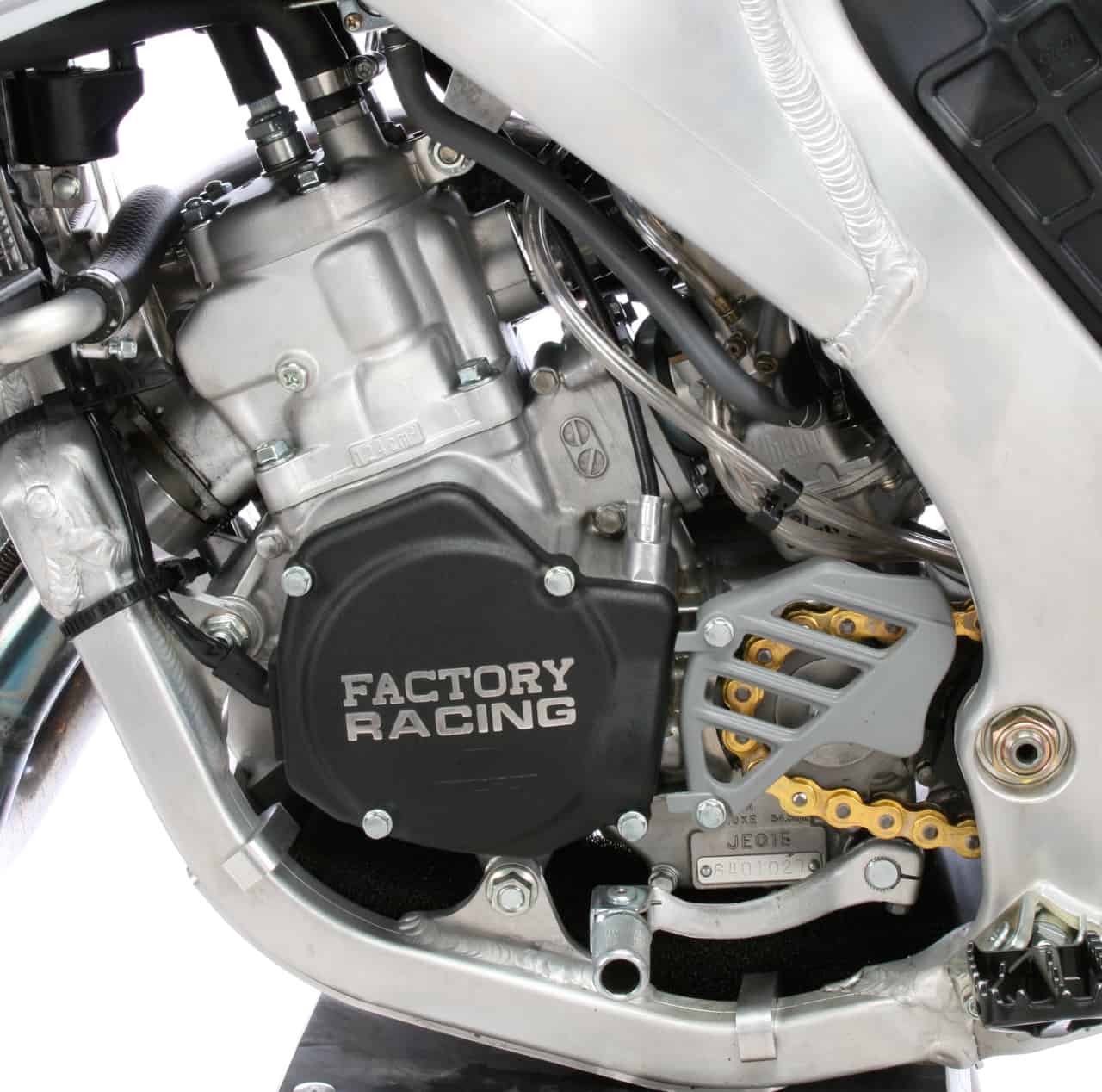
Wiseco bored and replated the stock 54mm cylinder to 57mm (his upped the displacement from 125cc to 139cc).
Ergos: Wiseco opted for ProTaper Contour bars, which they mounted to Pro-Taper’s forged Top Clamp. A Boyesen ShokOut clutch-side grip was slipped on to reduce arm pump, while an ARC Axis clutch lever and folding brake lever complete the control department.
Suspension: Pro-Action revalved suspension and added stiffer springs to target a 180-pound rider.
Miscellaneous: Wiseco armed the CR139 with their forged clutch compon«ents (clutch basket, inner hub and pressure plate), as well as their fiber and alloy plates and billet clutch cover. The cases were protected by a Works Connection Glide Plate, while the rider hands hid behind Cycra hand guards.
TEST RIDE: HANG ON AND PRAY
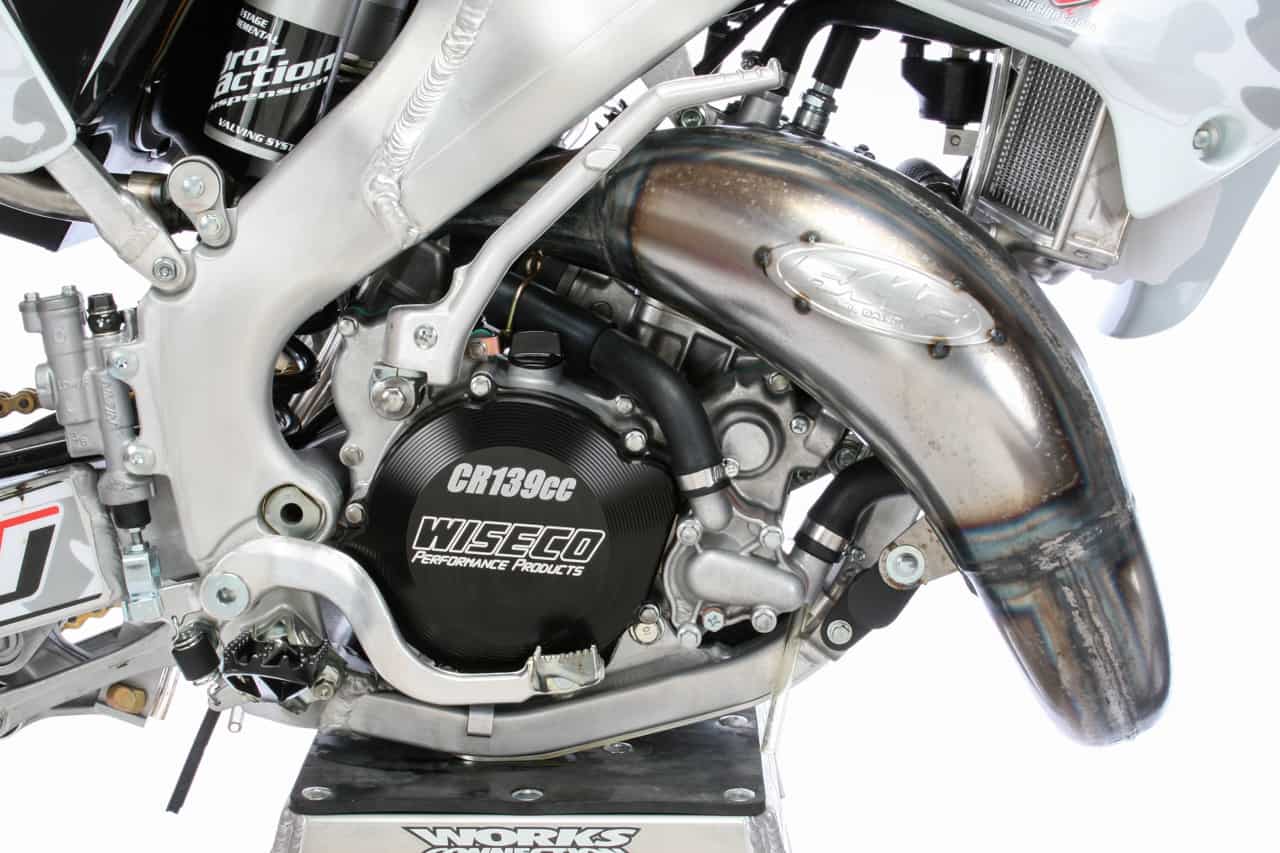
Wiseco’s big-bore CR139 is a blast to ride, especially compared to the stock CR125 engine. The extra displacement adds several horsepower, but best of all broadens out the previously snappy CR125 power delivery. There isn’t just more power, but it is broader, more effective and easier to use. Loam, mud and soft berms always bogged the stocker down. They didn’t bother the CR139. On the CR139, soft berms on the edge of the track called like a Siren. The light weight and good chassis make the CR139 very willing to change directions in all types of turns, and after the MXA test riders got a few laps on the bike, they quickly remembered the joy of carrying speed and negotiating turns flat-out on a two-stroke.
The CR139 comes on the pipe fairly early in the midrange. The rev is pretty good for a big-bore, but the best results are achieved by shifting before the power begins to sign off. The penalty for not shifting is minor, as the CR139 flattens out before it signs off. By 125cc standards, the CR139 has a very usable power delivery. By 250F standards, the CR139 still requires more work to go fast.
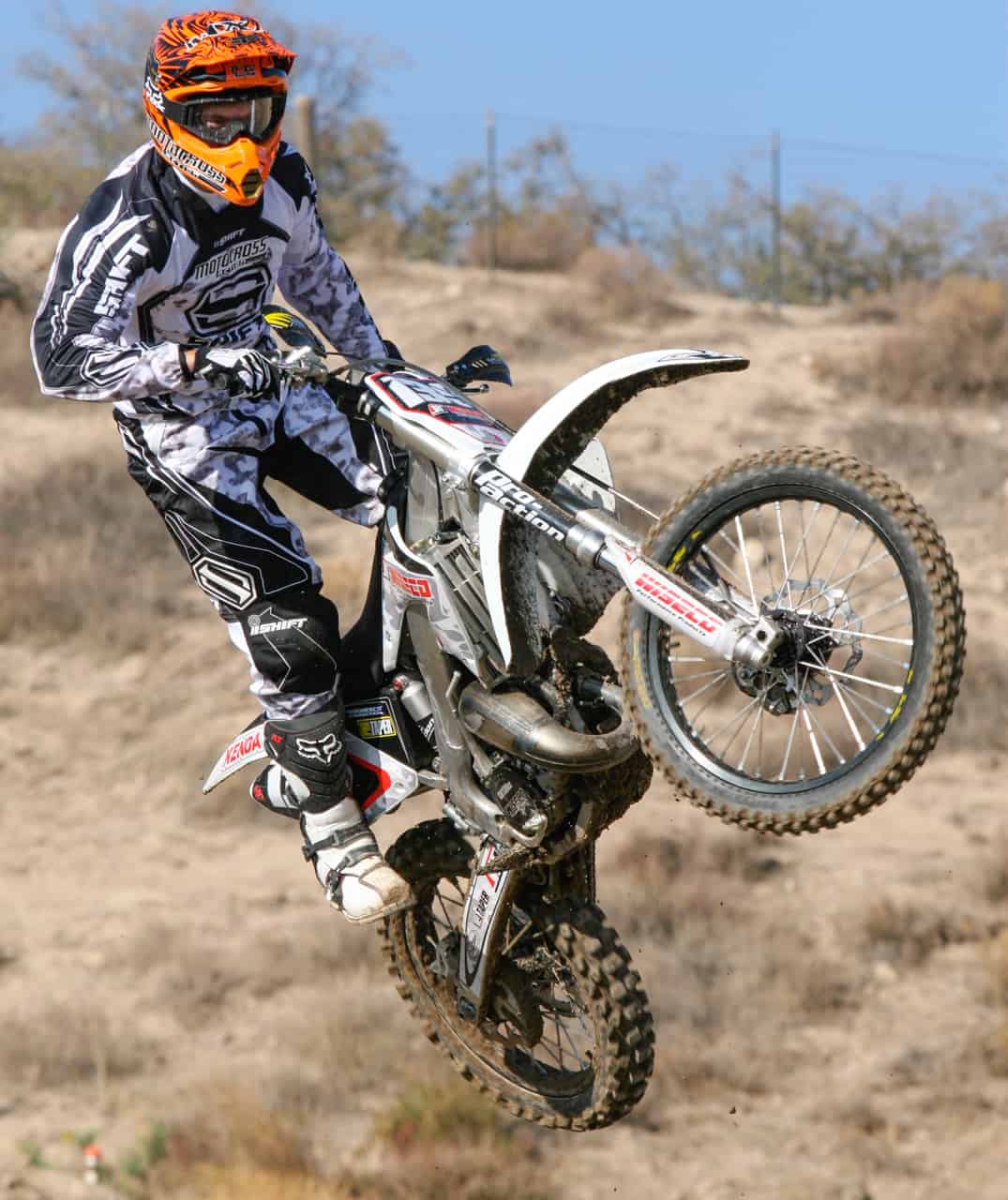
On the track, the stiffer suspension made the CR139 feel even lighter than a 125 (if that’s possible). At first, test riders rarely used the full travel of the forks, even though the bike absorbed the bumps well in most situations. When we softened up both the front and rear, the CR139’s Pro-Action suspension settled into turns better and hooked up on acceleration. Overall, the Pro-Action’s revalved suspension worked well. Most of all, hitting jumps was joyous on the CR139. The feather-weight bike coupled with stiffer springs lets the rider forget his worries about coming up a little short or going a little long.
Is the Wiseco CR139 a 250F beater? When established in a straight line and on the pipe, the 139 is in a dead heat with the average 250F. Through flat turns, on off cambers, up steep hills and on the exit of turns, the tractable power of 250Fs consistently gets the jump on the 139. The 139 isn’t without its own advantages however. Thanks to its light weight and good suspension, late braking is super easy.
Is the Wiseco CR139 a KTM 144SX beater? We wanted to know the answer to that question so much that we took a 2008 KTM 144 with us to every CR139 test session. When all is said and done, even though Wiseco’s 139 mill is significantly improved over the stock machine, it must be ridìden hard to keep up with the purpose-built 144. No surprise, the 2003 CR125 was no match for the 2003 KTM 125SX. When they both get bigger, the better one is still better.
WHAT DO WE REALLY THINK?
In AMA Professional Racing, the so-called “Motocross Lites” class is really the 250F class. A 125cc two-stroke isn’t competitive against factory four-strokes with double the displacement. AMA Amateur Racing offered a sliver of hope for the tiddler two-strokes by allowing up to 151cc two-strokes to compete against the 250cc thumpers in 2007, but that rule has been changed for 2008 to allow 250cc two-strokes to compete against 250 four-stokes. It’s just one more nail in the coffin for the one-two-fives.

We applaud Wiseco for their project bike. Keeping two-strokes alive is a noble cause. And finding ways for 125 two-stroke owners to keep their older bikes on the track for a few more years is equally admirable.
On a racetrack, a stock 2003 CR125 would be virtually useless against the current breed of 250Fs. The Wiseco CR139 stands more than a fighting chance. Do you have an old 125 collecting dust in the corner of the garage? Do you have the opportunity to buy one cheap? With a little work that bike could be a race-winning weekend warrior. It’s not time to put old Bessie out to pasture yet.





Comments are closed.